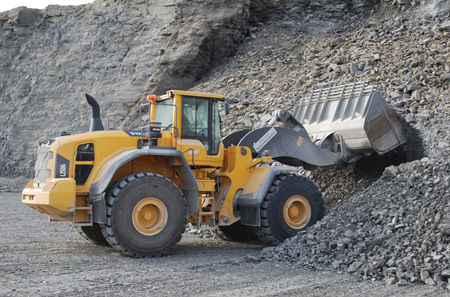How To Inspect A Used Wheel Loader – Part 2
Engine – The engine inspection of wheel loaders should include checking for oil leaks and any unusual engine noise. Check the condition and the level of the engine oil, antifreeze and hydraulic oil. Also, you need to check the belts for wear and determine if they need to be replaced. When looking for leaks, look around the engine and the radiator. The center pivot, also known as articulation joint, is the most critical area that needs to be closely inspected. The air cleaner indication also needs to be checked. Start the engine and see if the gauges are working properly. If there are some signs which indicate engine problems, or if the engine makes unusual sounds, don’t waste any more time and look for other available second-hand wheel loaders.

Transmission – The inspection of the transmission of wheel loaders is very simple. If there are no signs of strange noise or leaks and the transmission system works smoothly, you can be sure that the transmission is in good condition. If you are unsure about the condition of the transmission, it is best to contact a wheel loader dealer to help you out.
Frame – Any damage to the frame of the wheel loader can lead to major problems, therefore a detailed inspection of the frame is a must. To avoid a numerous problems, check the frame for any cracks, plates or welds. Also, check the pins and bushes for signs of deterioration. As you know, you are buying a second-hand wheel loader and some wear or tear should be expected. But the frame of the loader should be in good condition. Do not forget to examine underneath the loader. Look for puncture holes or other similar damages caused by debris. And finally, identify the parts or areas that have been previously repaired.
Bucket – The bucket of wheel loaders is usually ignored during the inspection process, even though it is one of major parts. Conduct a thorough inspection to identify any signs of wear. Inspect the digging edge of the bucket, its pins and bushes and look for any cracks. Inspect the teeth of the bucket and see if there is a need for replacement. Bucket repairs are quite simple, however they can cost you a lot of money, especially if you need to replace the teeth, the cutting edge or the adapter.
Buying a second-hand wheel loader is not an easy decision to make, but with detailed inspection you have a great chance of getting a second-hand wheel loader in good working condition. Inspect the wheel loader thoroughly, from the inside and outside. If you can’t make a decision which second-hand loader to purchase even after detailed inspection, ask a supplier or a loader operator for help.

